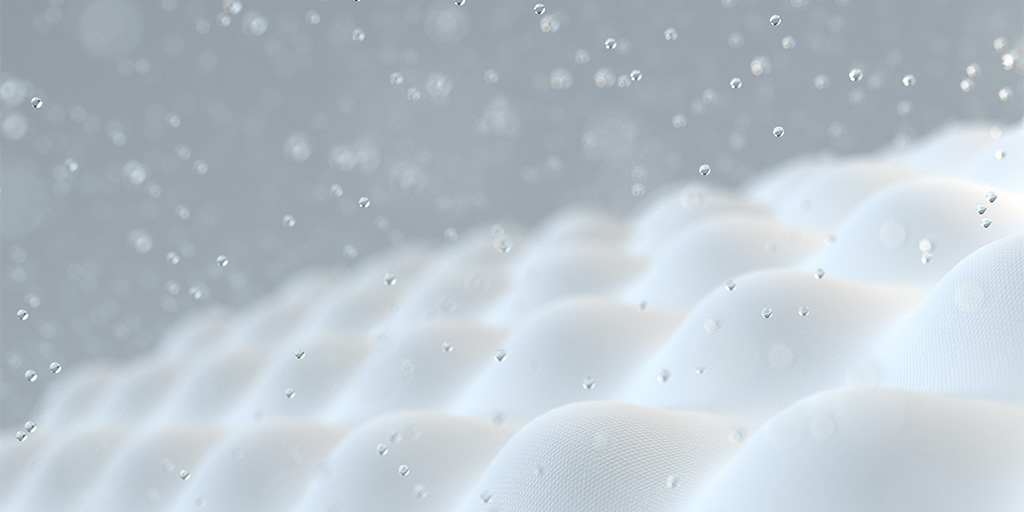
Overview
Zeon has developed a new material it is calling Quintac Styrene Block Copolymer. The new polymer, also known as QSBC, offers a unique combination of properties. ZEON’s nano-level polymer structure control technology has made it possible to design this new TPE (Thermoplastic Elastomer) that combines the flexibility of rubber with the strength of plastic.
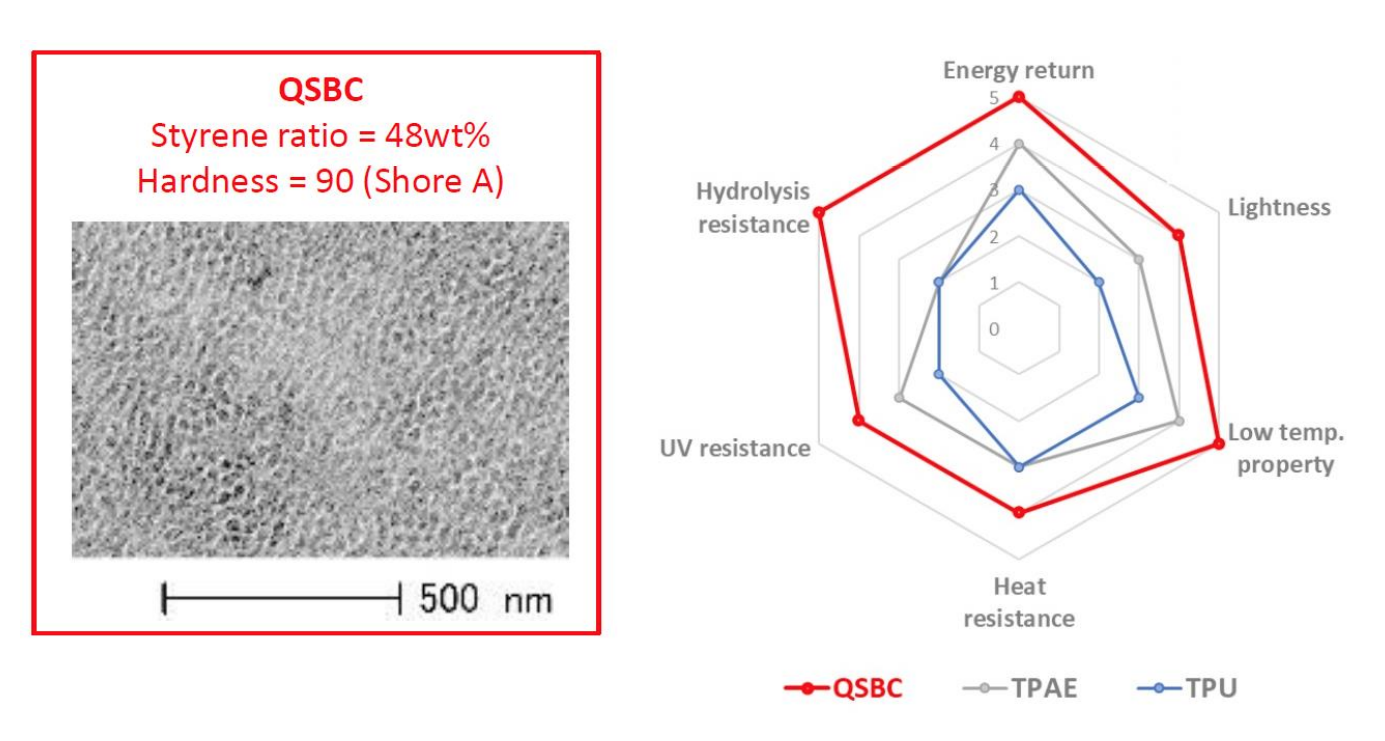
Key Technology Features and Advantages
- High stiffness and high elasticity
- Lower density than polyurethane or polyamide (nylon), reducing product weight
- Will not melt, turn yellow, or thermally degrade, even at temperatures of 170°C for 2 hours under high moisture conditions
- Lower odor than SIS, polyurethane, and polyolefin
- Superior hydrolysis resistance compared to polyurethane and polyamide (nylon) materials
- Better UV resistance than polyurethane and polyamide (nylon) materials
- Highly resistant to alkaline conditions
- Excellent oil absorption and retention
Potential Applications
- QSBC alone:
- High-temperature pressure-sensitive adhesive
- High-temperature resistant films and sheets
- Molded parts
- QSBC in blends or alloys with other thermoplastic elastomers
- Medical products such as catheters and stents, medical plastic supplies, and other medical devices
- Apparel products such as stretchable sportswear
- Simulated organs for surgical training
- Components for suspensions, engine mounts
- Silentblocks to absorb vibration and shock for cars, motorcycles, scooters and mountain bikes
- Automobile interior parts (increased impact resistance compared to unmodified plastic parts)
- Softener for ABS
- Electronic equipment housings
- May replace TPU (thermoplastic polyurethane), TPE(Thermoplastic copolyester), and TPAE(Thermoplastic polyamide elastomer); QSBC may be able to substitute for silicone resin in various applications
Technology Description
QSBC maintains resiliency even when quite thin, differentiating it from other functional materials in the market. Utilizing QSBC as an alternative to other materials used to increase product resilience could reduce weight in many products.
Because of its excellent hydrolysis resistance and UV resistance, QSBC has potential for use in apparel (especially sports apparel) that is often exposed to the outdoors or moisture, and in medical devices that require heat molding at high temperatures or ultraviolet sterilization in the manufacturing process.
In addition, QSBC is heat stable up to 170°C with high moisture resistance. Its low odor and virtually undetectable VOCs make it a potential fit as a polymer performance additive for hot-melt pressure-sensitive adhesives and sealants used in automotive interiors, consumer goods, and medical products. QSBC can also be used as an excellent impact modifier or toughener for clear polypropylene (PP).
QSBC when used as a modifier for thermo-polymers can be added in percentages similar to SEBS additives.
Zeon believes manufacturers seeking to improve processability/workability will want to evaluate QSBC as it softens the base polymer, resulting in easier processing and mixability of resins.
Additional Technical Details
Elasticity and Stiffness:
The permanent elongation of QSBC is 1%, much lower than that of polyurethane and polyamide elastomers, as shown in the hysteresis data below. By controlling the microphase-separation structure, QSBC exhibits very good resilience even in the high-stress range (high elastic modulus).
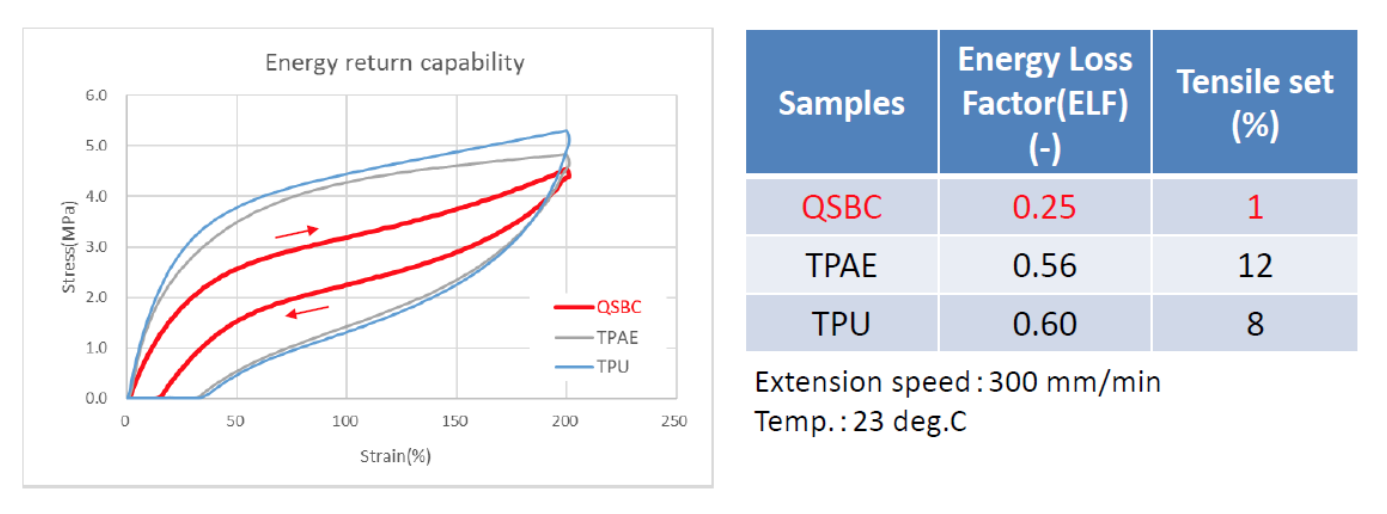
Weight Reduction:
Due to its low density, QSBC can reduce the weight of products currently made from polyurethane or polyamide (nylon)
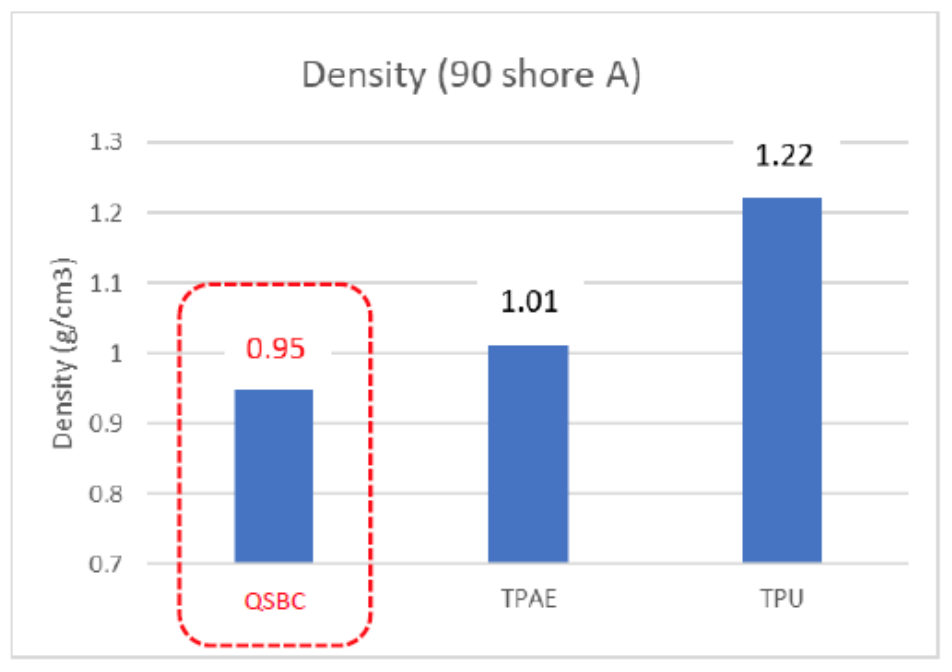
Applicable temperature environment:
QSBC is suitable for use in temperature environments from -30°C to 80°C.
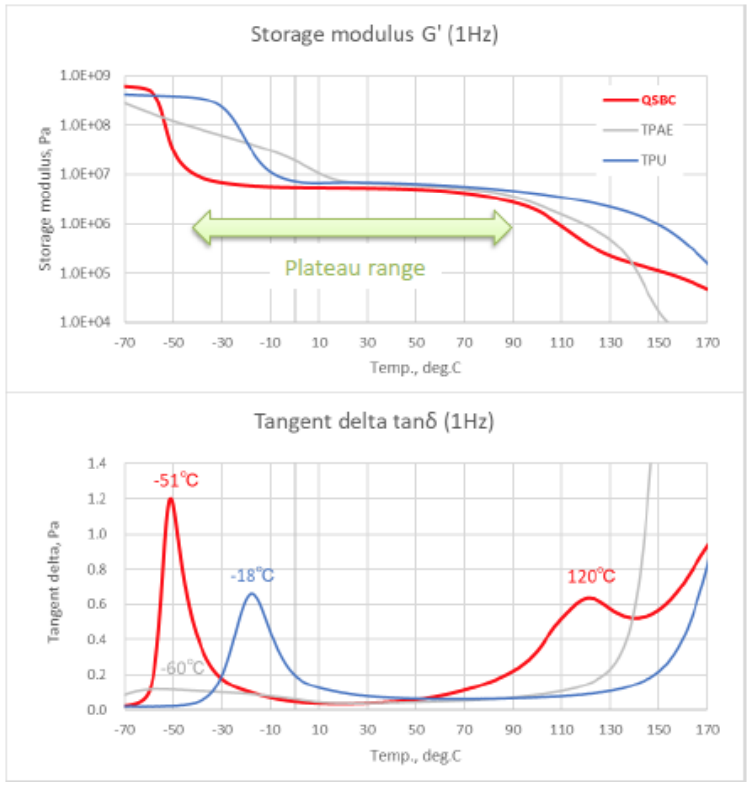
Hydrolysis Resistance and UV Resistance:
ZEON’s QSBC exhibits superior hydrolysis resistance compared to polyamides (nylons) and highly elastic polyurethanes, with no change in tensile strength retention after 2000 hours. UV resistance is also excellent, with nearly twice the tensile strength retention of polyamide and polyurethane at 300 hours.
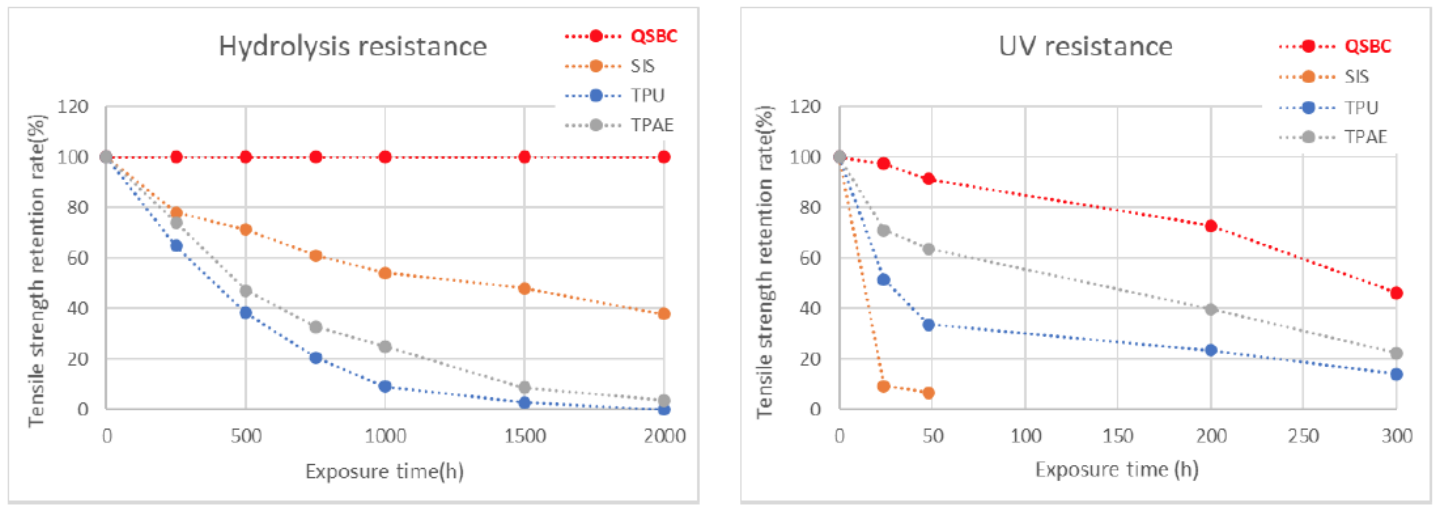
High-Temperature Performance:
QSBC maintains its form and transparency at temperatures up to 170° C for 3 hours, as seen below. Most other TPEs start to melt, deform or discolor. Additionally, its low VOC and low odor characteristics, which are particularly notable at elevated temperatures, are comparable to SEPS products on the market, and much lower than polyurethane olefins.
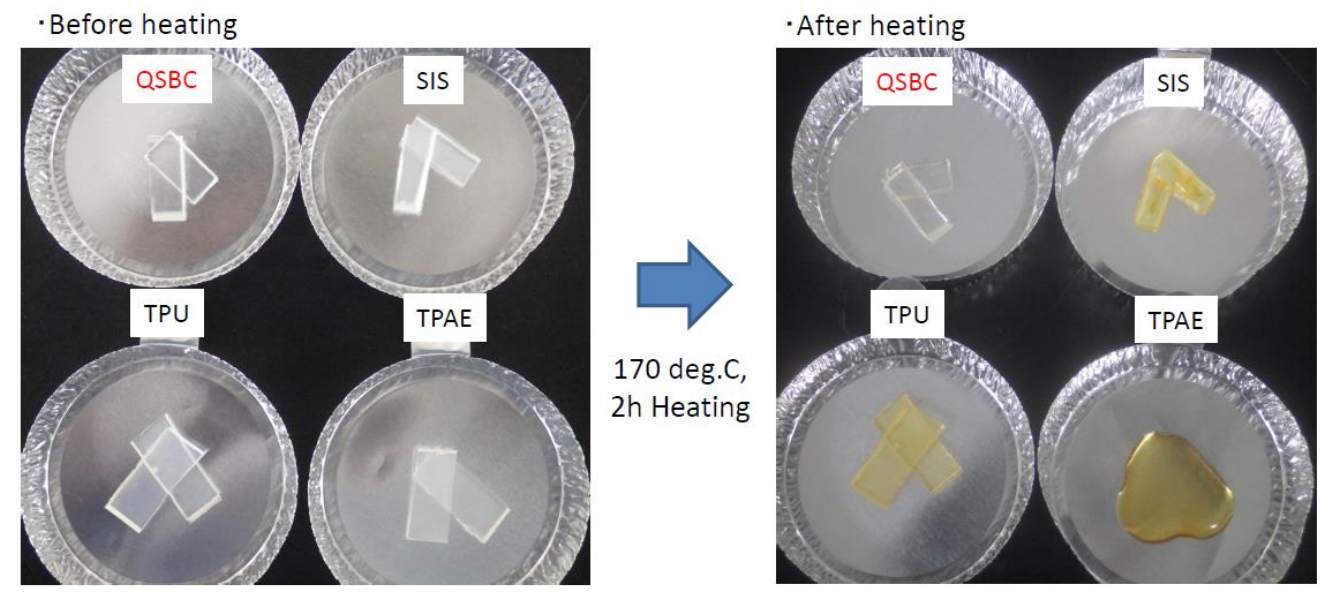
Low VOCs as an Indicator of Weather Resistance:
As materials decompose they release VOCs and odors. Conventional SIS, polyurethane, and polyolefin begin to decompose and generate VOCs and odors during heating to 170°C. When QSBC is heated to 170°C for 30 minutes no odor or VOCs are detectable. The illustration below compares the performance of QSBC, SIS, PU, and polyolefin. QSBC’s low VOCs and low odor indicate high weathering resistance and its suitability for use in the automotive (interior parts), medical and adhesive industries.
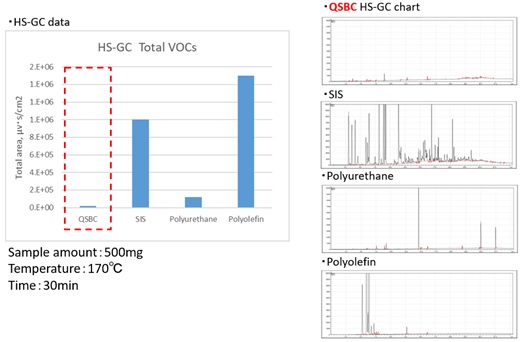
Comparison Against Other Thermoplastic Elastomers
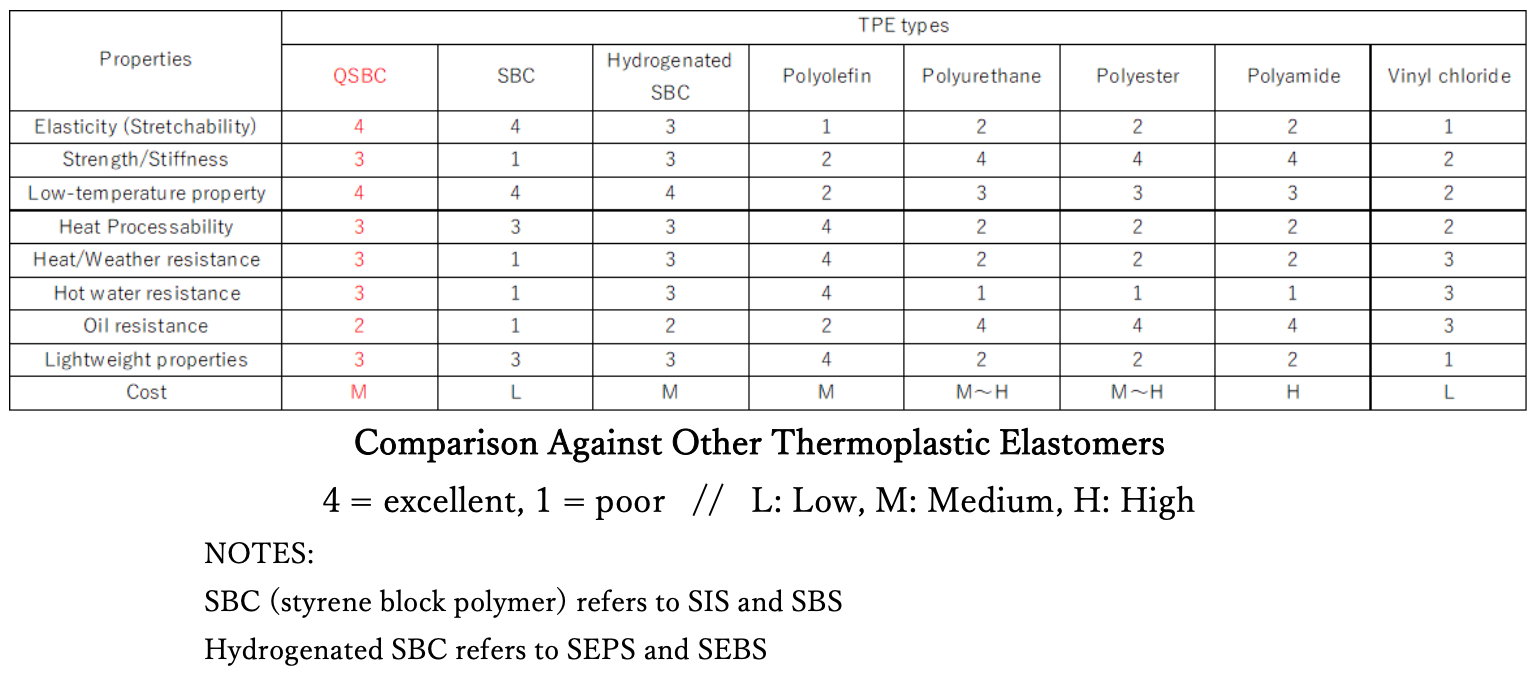
Development Status
Zeon’s QSBC is currently at the advanced product development stage. Zeon is seeking input on application requirements and fit from compounders and end users interested in developing products in various markets using QSBC. Samples in small quantities are currently available (September 2022). Additional information is available upon request.
Seeking Application Partners
Zeon is seeking end users interested in developing products using QSBC. QSBC is currently at the advanced product development stage, and Zeon is seeking input from professionals in various markets on application requirements and fit.
Owner
ZEON CORPORATION is a $3.3B, 3,300-person chemical company focused on specialty elastomers, polymers, and specialty chemicals founded in 1950. The company produces a variety of products including high nitrile rubber that can be used in strong cements and adhesives, acrylonitrile butadiene copolymer latex, resins and other rubber additives.